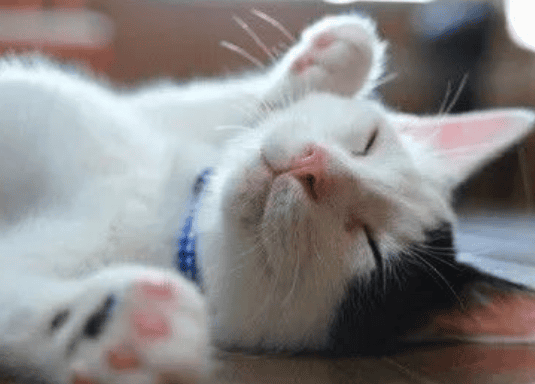Like humans, almost all animals need some form of rest or sleep. Most animals rely on natural circadian rhythms to regulate the two distinct states of sleep and wakefulness.

Humans dream while sleeping, but scientists want to know if the same thing happens It also happens in animals. Some studies show that animals have many similarities to human pups when it comes to sleep. They wet the bed, talk in their sleep, and even make rhythmic head movements in their sleep.
Different animals have different sleep patterns
The American "Discover" magazine reported that the sleep patterns of different species vary greatly. For example, cats can sleep 16 hours a day. Elephants only sleep about 2 hours a day. Giraffes take naps intermittently throughout the day, lasting about 5 minutes each time. Although giraffes may sleep for up to 4.5 hours per day, it is estimated that only 30 minutes of this is deep sleep.
Predator animals sleep for long periods of time throughout the day, and animals that have a safe place to sleep sleep more than those that sleep in the open. Some animals, such as horses, have strong skeletons and can sleep standing up. However, they are unable to enter the REM sleep stage in this position. To enter REM sleep, they must lie down.
Interestingly, when dolphins sleep, only half of their brains are in a resting state, which is called "hemibrain sleep", while the other half is in an alert state.

So, do animals dream when they sleep? The American "Sleep and Health" magazine website reported that experienced veterinarians have confirmed that animals will shake their limbs, twitch facial muscles and make sounds while sleeping, which indicates that the animals are actually dreaming. Animal researchers have also noted that daytime behavior affects dreaming in animals in a similar way to humans.
What non-human mammals and humans have in common is the existence of a REM sleep stage. Observations show that the REM sleep stage is characterized by high levels of brain activity. Visual activity, motor activity, and metabolic activity all increase during this period. For example, dogs often bark or jerk their legs during REM sleep.
Animals can suffer from sleep disorders
According to the National Sleep Foundation website, comparative studies related to human sleep are usually conducted on mice, rats, cats and dogs. Research shows that a variety of animals are affected by sleep disorders.
Sleep and Health magazine reports that, just like humans, sleep disorders in animals may be primary or secondary, caused by brain tumors, encephalitis, medication, Caused by heart problems and other reasons. The most severe recognized primary sleep disorders fall into two categories: narcolepsy and sleep apnea. Narcolepsy is characterized by excessive daytime sleepiness, falling asleep suddenly, and hallucinations during sleep or after waking up. Studies in dogs and Welsh ponies have confirmed that if this sleep disorder is not treated, the consequences can be serious. Sleep apnea means that breathing stops during sleep. Scientists have discovered this type of sleep disorder in Persian cats and bulldogs.

There is evidence that mice may suffer from insomnia for the same reasons that humans suffer from insomnia , that is, stemming from stress and anxiety. In one study, researchers moved male rats from a familiar cage to a dirty cage that had been occupied by another male rat. The results showed that the moved mice seemed to experience insomnia.
Animal sleep research helps understand the human brain
Giraffes can stay awake for weeks at a time, while brown bats sleep almost the entire day. The golden dormouse balances carefully on a branch and sleeps soundly, but any trembling in the branch will immediately wake it up.
From small tree shrews to the largest mammals, they all have different sleep patterns and habits. Rats have similar sleep needs to humans, requiring rest to stay alert and energetic.
“An important way to understand human sleep is to study animals.” said Jerome Siegel, professor of psychiatry at the UCLA Sleep Research Center, “If we can better understand animal sleep, We can better understand the core of human sleep"

Over the years, Scientists have been working to identify abnormalities in the human brain that cause narcolepsy. In fact, dogs have endless potential to help treat this disease. Some dogs are even helping scientists treat severe sleep disorders. In the 1970s, significant progress was made in treating narcolepsy. At that time, William Diment, MD, of the Stanford University Sleep Research Center in the United States, learned that some dogs showed symptoms of narcolepsy similar to those in humans, namely sudden collapse and muscle weakness, which led to near paralysis in dogs. More than 20 years later, building on these initial observations, researchers discovered the gene that causes narcolepsy in dogs, hypocretin receptor 2. Narcolepsy is a type of narcolepsy. Further studies have shown that people with narcolepsy have severely reduced levels of hypocretin in their brains. Studies have also found that injecting hypocretin into dogs with narcolepsy can reduce the severity of certain episodes of the condition. These findings suggest that scientists could design drugs to replace hypocretin that is missing in patients' brains.
In addition, dolphins' "hemibrain sleep" may provide new clues for human brain research. Charles Amlanna, director of animal research at Indiana State University in the United States, said that in the future, this type of brain model may be used to treat neurodegenerative diseases.

 扫一扫微信交流
扫一扫微信交流
发布评论